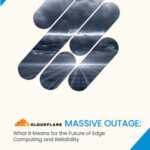or call: +1 (845) 347-8894

or call: +1 (845) 347-8894

2025 Solar Risk Assessment Report highlights challenges and opportunities to the renewable energy sector as solar and battery storage play a more prominent role in supporting the electrical grid.
kWh Analytics, the leading provider of Climate Insurance and risk management solutions for renewable energy, released its 7th annual Solar Risk Assessment (SRA), a comprehensive report designed to provide an objective, data-driven evaluation of solar and battery energy storage systems (BESS) risk. The annual report includes contributions from academia, technology, financing, and insurance leaders in the solar energy and BESS industries.
“As renewable energy becomes the backbone of the electrical grid, ensuring system resilience is no longer optional—it’s imperative,” said Jason Kaminsky, CEO of kWh Analytics.
This year’s report arrives at a pivotal moment for the renewable energy industry as solar and wind energy production have become imperative to the U.S. energy mix, and new renewable energy deployment shatters expectations and records. At the same time, these assets face challenges from intensified climate impacts, operational and safety concerns, and increased cybersecurity threats.
Top IntentTech News: Acer Unveils Nitro GPUs with AMD & Intel Power
“As renewable energy becomes the backbone of the electrical grid, ensuring system resilience is no longer optional—it’s imperative,” said Jason Kaminsky, CEO at kWh Analytics. “Keeping these assets operational requires unprecedented collaboration among asset owners, operators, financiers, insurers, brokers, and manufacturers. We are grateful for the valuable research and articles by this year’s Solar Risk Assessment contributors, who are helping to establish higher industry standards required to build infrastructure that withstands heightened risks.”
The 2025 report consists of 15 articles written by U.S. and global industry partners and provides an objective analysis of the top extreme weather, operational, and battery risks facing the renewable energy sector. Top findings by category include:
|
Extreme Weather Risk |
|||
|
|
|||
|
1. |
kWh Analytics: Hail accounts for 73% of total losses by damage amount, despite representing only 6% of loss incidents | ||
|
2. |
Central Michigan University: 99.27% of PV plants have a 10% annual chance of seeing Hail bigger than 2 inches in their close proximity | ||
|
3. |
Kiwa PI Berlin: Cross-cutting analysis reveals frame to glass deviations exceed 5% of acceptable thresholds, highlighting needs for additional quality control & module testing | ||
|
4. |
60Hertz Energy: Projects can experience 6% revenue annual loss from far away wildfire smoke | ||
|
5. |
VDE Americas: Study Shows 100% hail stow success despite severe storm exposure | ||
|
6. |
kWh Analytics and GroundWork Renewables: The risk of inelastic behavior: Physics-based models may be overestimating the benefit of hail stow by 48% for ~3in hail |
||
|
Operational Risk |
|||
|
|
|||
|
1. |
kWh Analytics: PV sites around the country are underperforming by 8.6% on average | ||
|
2. |
Radian Generation: Cybercriminals targeting solar’s rapid growth: persistent threats demand action | ||
|
3. |
Zeitview: Hot spot prevalence on sites increased from 0.24% in 2023 to 0.81% in 2024: A Sample of Newly Commissioned Sites in North America | ||
|
4. |
Clean Power Research: Future climate models suggest potential -4.9% impact to PV production | ||
|
5. |
kWh Analytics: AI models misclassify up to 20% of solar operational issues without domain-specific training | ||
|
Battery Risk |
|||
|
|
|||
|
1. |
Clean Energy Associates: 28% of energy storage systems show fire suppression issues during 2024 factory inspections | ||
|
2. |
EPRI: To date, 72% of BESS failures have occurred within the first 2 years of installation | ||
|
3. |
ACCURE Battery Intelligence: State of Charge (SOC) estimation errors for LFP batteries can exceed 15% | ||
|
4. |
TWAICE: Lost in translation? O&M teams see up to 2x more BESS issues than asset managers | ||
“Insurance plays a key role in protecting our infrastructure,” said Isaac McLean, Chief Underwriting Officer, kWh Analytics. “The Solar Risk Assessment enables us to identify emerging risks and understand what data we need to inform accurate underwriting and promote resiliency among project developers and asset owners.”
Top IntentTech News: Pocket Storage and Forum Launch Tech-Enabled Urban Storage
Top IntentTech News: WeatherSTEM Advances Beach Safety Tools
To participate in our interviews, please write to our IntentTech Media Room at sudipto@intentamplify.com
Source – Businesswire




